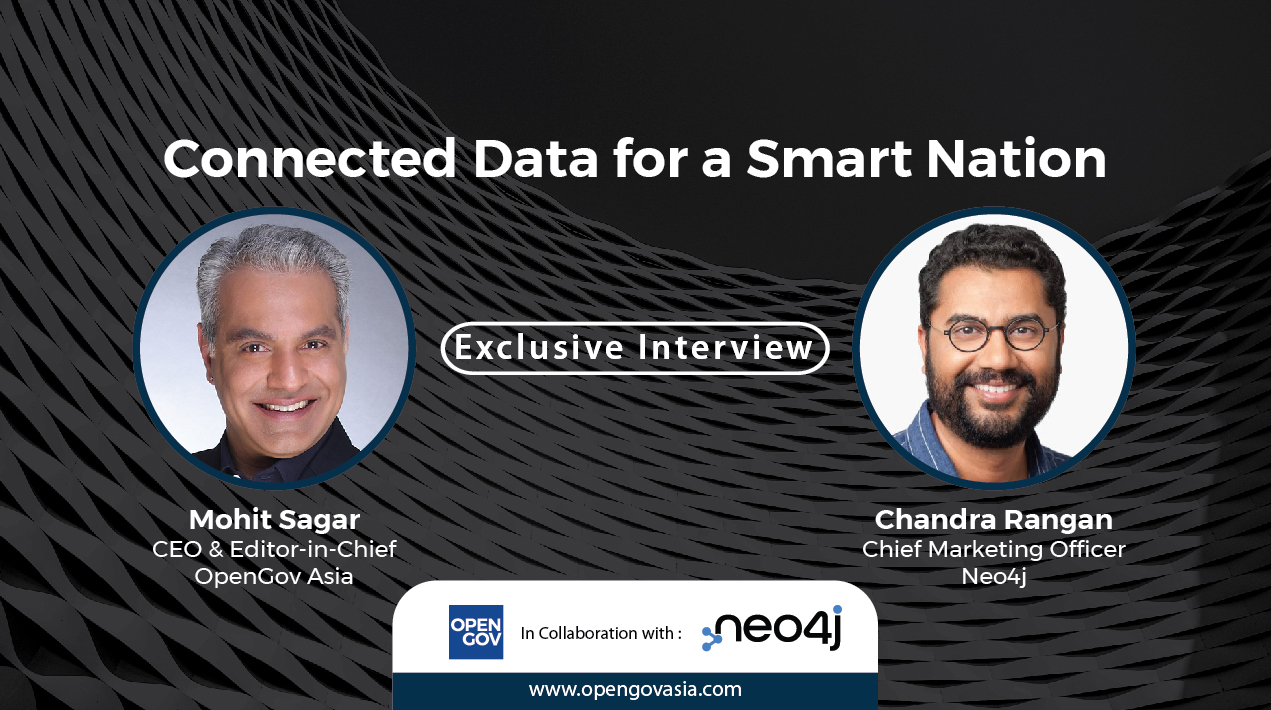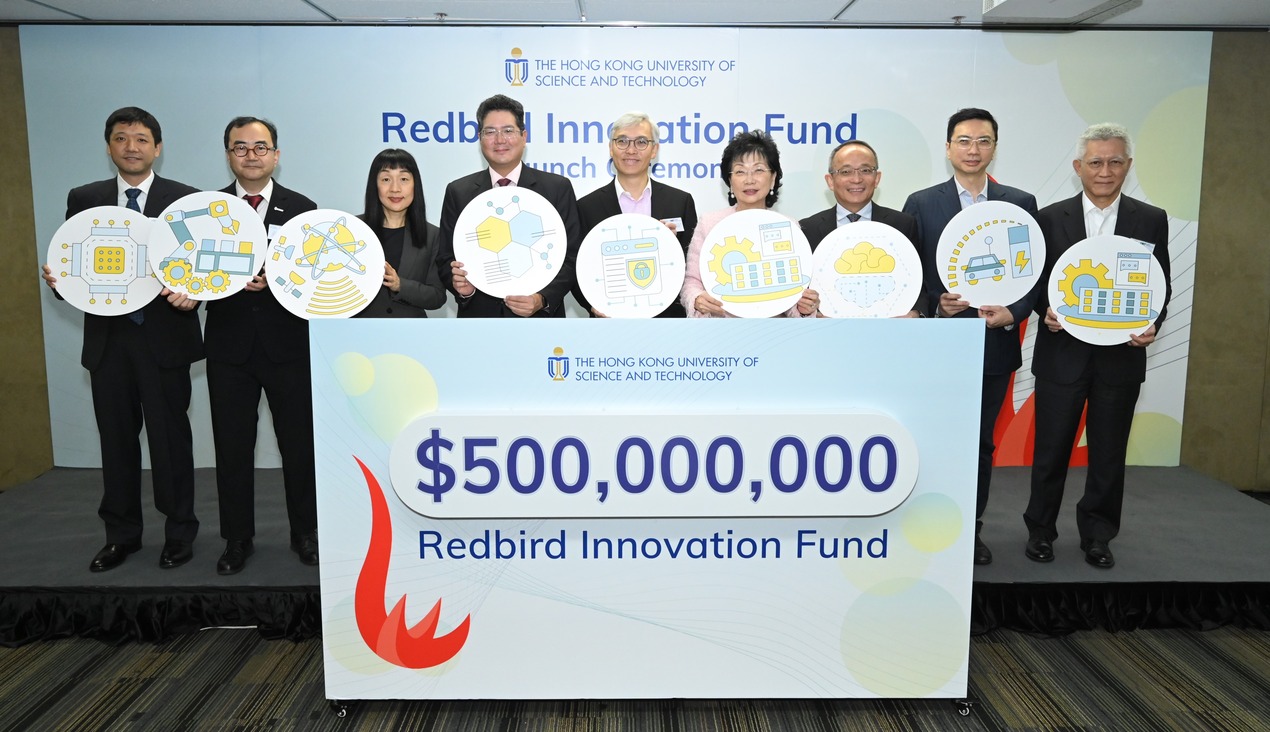
Data is information that has been organised in a way that makes it simple to move or process. It is a piece of information that has been converted into binary digital form for computers and modern methods of information transmission.
Connected data, on the other hand, is a method of displaying, using, and preserving relationships between data elements. Graph technology aids in uncovering links in data that conventional approaches are unable to uncover or analyse.
Different sectors have invested in big data technologies because of the promise of valuable business insights. As a result, various industries express a need for connected data, particularly when it comes to connecting people such as employees or customers to products, business processes and other Internet-enabled devices (IoT).
 In an exclusive interview with Mohit Sagar, CEO and Editor-in-Chief of OpenGov Asia, Chandra Rangan, Chief Marketing Officer of Neo4j shared his knowledge on how a connected data strategy becomes of paramount importance in building a smart nation.
In an exclusive interview with Mohit Sagar, CEO and Editor-in-Chief of OpenGov Asia, Chandra Rangan, Chief Marketing Officer of Neo4j shared his knowledge on how a connected data strategy becomes of paramount importance in building a smart nation.
Connected data enables businesses
A great example of the power of graph technology, and a very common use case for Neo4j, is its use in the financial sector to uncover fraud. Finding fraud is all about trying to make connections and understand relationships, Chandra elaborates. A graph-based system could detect if fraud is taking place in one location and determine if the same scenario has occurred in other locations.
“How does one make sense of this? Essentially, you are traversing a network of interconnected data using the relationships between that data. Then you begin to see patterns develop and these patterns provide you with answers so that you can conclude whether there is fraud.”
What is of great concern is that fraud is occurring with much greater frequency and with a higher success rate nowadays. The key to stopping and mitigating the impact is time. Instead of detecting a fraud that occurred hours or days ago,
“What if the organisation could detect it almost immediately and in real-time as it occurs?” asks Chandra. “Graph offers this kind of response and is why it’s a great example of value!”
Supply chain and management are other excellent examples of RoI. One of Neo4j’s clients, which operates arguably the largest rail network in the United States and North America created a digital twin of the entire rail network and all the goods. With graph technology across their network, they can now do all kinds of interesting optimisation much faster, leading to better, more efficient outcomes for their entire system.
The pandemic has taught the world about the value and fragility of supply chains. Systems across the globe are being reimagined as the world’s economy realise the need to become more digital and strategic. More supply sources, data, data sharing, customer demands, and increased complexity necessitate modern, purpose-built solutions.
Apart from all the new expectations and requirements for modern supply chains, systems need to and are becoming more interconnected because of new technologies.
Maintaining consistent profitability is difficult for firms with a high proportion of assets. Executives must oversee intricate worldwide supply chains, extensive asset inventories and field operations that dispatch workers to dangerous or inaccessible places.
With this, organisations need a platform that connects their workforces and makes them more capable, productive and efficient. A platform that provides enterprises with real-time visibility and connectivity, while also assuring efficiency, safety, and compliance.
Modern technologies are required to improve interconnectivity, maximise the value of data, automate essential procedures, and optimise the organisation’s most vital workflows.
Modern data applications require a connected platform
“When we programme, when we create applications, we think in what we are calling a graph. This is the most intuitive approach that you can have,” says Chandra.
Any application development begins with understanding the types of questions people want to solve and then mapping it to a wide range of outcomes that they want to achieve. These are typically mapped in what is known as an entity relationship diagram.
Individuals’ increased reliance on systems that work in a way that makes sense to them and supports them has increased criticality. And frequently, when these systems fail, Neo4j makes sense of complexity and simplifies what needs to be done, resulting in a significant acceleration.
As the world becomes more collaborative, integrated, and networked, nations must respond more quickly to changes in their business environment brought on by the digital era; otherwise, they risk falling behind or entering survival mode.
The proliferation of new technologies, platforms, and devices, as well as the evolving nature of work, are compelling businesses to recognise the significance of leveraging the most recent technology to achieve greater operational efficiencies and business agility.
A graph platform connects individuals to what they require, and when and when they require it. It augments their existing process by facilitating the effective recording and management of personnel data. Neo4j Graph Data Science assists data scientists in finding connections in huge data to resolve important business issues and enhance predictions.
Businesses employ insights from graph data science to discover activities that point to fraud, find entities or people who are similar, enhance customer happiness through improved suggestions, and streamline supply chains. The dedicated workspace combines intake, analysis, and management for simple model improvement without workflow reconstruction.
As a result, people are more engaged, productive, and efficient with connected data. Nations can bridge information and communication gaps between executive teams, field technicians, plant operators, warehouse operators and maintenance engineers. Increasing agility and productivity offers obvious commercial benefits.
In short, organisations easily integrate their whole industrial workforce to increase operational excellence and decrease plant downtime, hence maximising revenues. This methodology is based on a collaborative platform direction.
Contextualising data increases its value
According to Chandra, data is a representation of the world in which people live, and people use data to represent this world. As a result, the world is becoming more connected, and people no longer live in silos and continue to be associated in society.
“If you think about data as the representation of the world that we live in, it is connected data and we can deal with all the complexities that we need to deal with when we try to make sense out of it,” explains Chandra.
Closer to home, connected data is crucial to Singapore’s development as a smart nation. “Connected data is at the centre of each of those conversations around developing the nation. When you think of Singapore as a connected ecosystem and when you think about citizens, services, logistics, contract tracing, and supply chain.”
Chandra believes that the attributes have saved the connection between data and people, which is why connections are important. Once people understand those connections, it becomes much easier and much faster to derive the insights that are required.
Without connected data, organisations lack key information needed to gain a deeper understanding of their customers, build a complete network topology, deliver relevant recommendations in real-time, or gain the visibility needed to prevent fraud.
Thus, “knowing your customer is understanding connected data.” With the right tools, data may be a real-time, demand-driven asset that a financial institution can utilise to reinvent ineffective processes and procedures and change how it interacts with and comprehends its consumers.
“Me as a person – who I am, my name, where I live – these are all properties of who I am. But what really makes me me, are the relationships I have built over time. And so, the notion that almost every problem has data that you can really make sense of with graphs is the larger “Aha” moment,” Chandra ends.
















